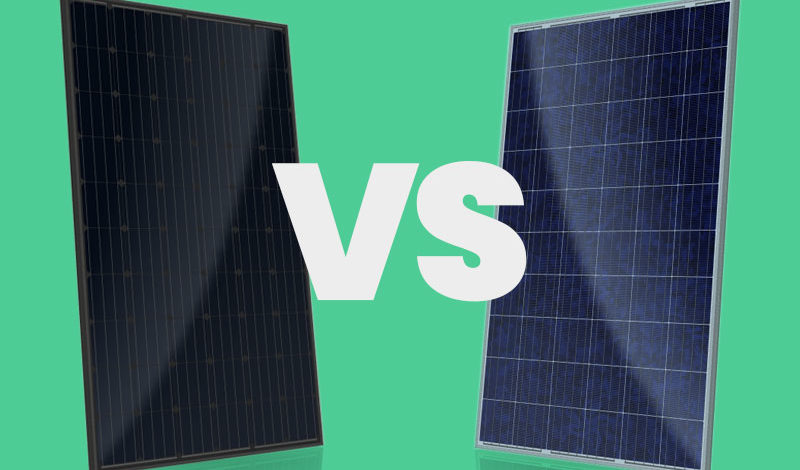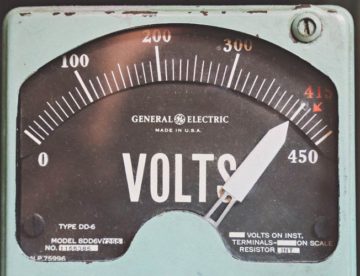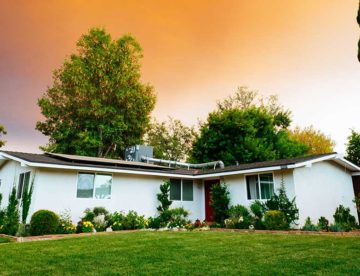For American homeowners, the price of electricity has escalated since 2001, exhibiting a total 63% rise by 2014. If you feel your electricity bills are costly today, imagine your expenses in the next 10 years.
Need to cut down your monthly electricity spend? Look up to the sky — the sun is your savior. You can save thousands switching to solar energy! Check out our free solar calculator to see how much.
Before you commence your home solar energy project, you will need to make a decision: should you buy blue solar panels or black solar panels? We’ll take a detailed look at each type to help you make an informed decision.
Different types of solar panels
It’s not just a matter of color. It’s actually the quality and the method of manufacturing blue and black solar panel cells that makes them slightly different from each other. Read on to learn how they are made and what gives each its distinctive color.
What are BLACK solar panels?
Black solar panels, also known as monocrystalline panels, are made from a single, high quality silicon crystal. This silicon has a higher level of purity as compared to the silicon crystals used in blue photovoltaic panels.
Technical information
Black solar panels are made through czochralski process. This process uses a silicon crystal seed that is placed in a vessel or vat of molten silicon. The silicon crystal seed is slowly drawn out along with the molten silicon, forming an ingot of solid crystal silicon. The ingot is then finely sliced into silicon wafers, which are used as solar cells for energy production.
Although blue and black panels are produced almost the same way, light interacts with a single crystal (monocrystalline) differently than many individuals crystals (polycrystalline). This causes these solar panels to appear black in hue.
The whole process of making black cells is comparatively more complicated than producing blue solar cells. Also, a significant amount of the pure silicon is wasted in the production of black solar cells, as all the four sides of silicon wafers are chopped off to get the shape of the cells right.
What are BLUE solar panels?
Blue solar panels are also called polycrystalline solar panels. Unlike a monocrystalline silicon cell, a polycrystalline cell is created from more than one raw silicon crystal.
Technical information
The process of making blue colored panels is very similar to that of producing black solar panels. However, the step of drawing up the silicon crystal seed (used to form monocrystalline solar cells) is skipped in case of blue solar cells.
The silicon crystals, melted and poured in the vat, are simply allowed to cool to form polycrystalline silicon cells. This forms distinctive grains and edges of the blue solar cells.
The blue solar panels have more glimmer on their surface than monocrystalline panels. However, the blue tint is also a result of a coating placed on these panels. The anti-reflective coating that increases the module efficiency and capacity for absorption, gives blue solar panels a bit of their color.
Advantages of blue and black solar panels
Which solar panel is right for you? This decision depends upon a number of factors, including your budget, your space, and the points highlighted below.
How are black solar panels better?
The uniform alignment of silicon crystals in a monocrystalline panel makes these panels more energy efficient. In addition to the energy efficiency, black panels absorb more light than blue ones. This means that black panels are capable of absorbing more sun rays and generating more solar power. This leads to more energy being produced for your home or business.
Also, black monocrystalline solar panels perform more effectively in warmer weather. With all solar cells, electricity production falls with the rise of temperature. However, this output degradation is less severe in black panels as compared to blue panels. That being said this difference is almost negligible and shouldn’t be a major factor in your decision.
Furthermore, black solar panels are also space-savers. You typically require fewer black solar panels than blue solar panels to generate the same amount of energy. They also last longer – with many manufacturers offering a 25-years warranty.
You can also count on black solar systems for good performance. They’re able to generate electricity even in low-light conditions.
How are blue solar panels better?
Polycrystalline cells were previously thought to be inferior to monocrystalline cells, because they were slightly less efficient. However, because of the cost-effective method of producing polycrystalline solar cells, they emerged as a dominant technology for the residential solar panels market.
Because blue cell panels are easier to produce, they are also less expensive. Both their upfront and installation costs are significantly cheaper as compared to black solar panels. They’re also used more commonly, so repairs are quick and easy.
The blue polycrystalline solar panel cells produce less waste in the manufacturing process. They also use less energy in their production process. If you’re concerned about your ecological footprint, this might be something you want to consider. Without a doubt, blue solar panels have their own set of advantages.
Blue or black panels: Which is the best for your home?
The differences between blue and black solar panels on the market today go beyond their color or aesthetic appeal. The color of a solar panel indicates the grade of silicon it’s made of.
Here’s a quick summary to help you choose the right one for your home!
Black/ monocrystalline solar panels
- Characterized by black and smooth appearance and use of high quality silicon
- Occupy less space and have a longer life span
- Formed from energy-intensive production process, and produces a lot of waste
- Carry a higher price tag for installers and consumers
Blue/ polycrystalline solar panels
- Characterized by blueish tint, more scattered look, and lower quality silicon
- Require slightly more space for producing the same amount of energy as black panels
- Less complicated production process, with minimal waste production
- More affordable
Regardless of which solar panel you choose, installing solar panels to power your home is a sustainable decision that has the following benefits in 2019:
- Reduce harmful emissions
- Get easy financing options for solar panel installation
- Claim sales and property tax exemptions
- Receive credits for surplus power production
And the most important of all, installing either type of panel will significantly lower your monthly energy bills.




